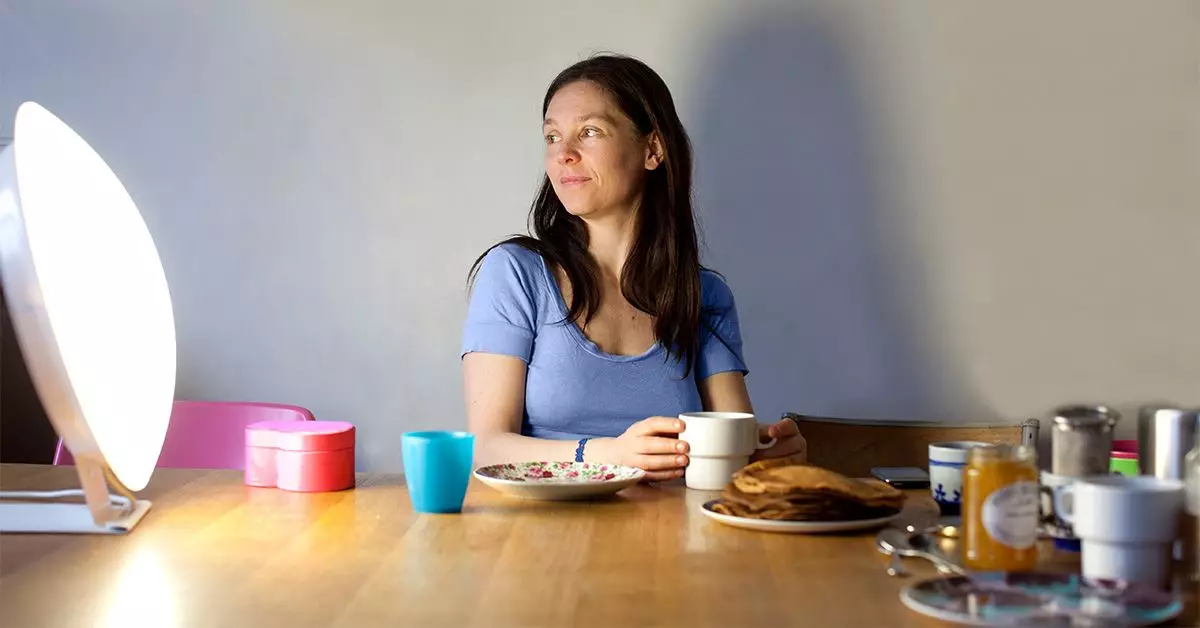As dazzling as the festive season is, winter can cast a veil of melancholy over many. Seasonal Affective Disorder (SAD), or winter depression, is a periodic form of major depressive disorder that surfaces with the changing of the seasons. While it often peaks during winter, when daylight is scarce, SAD can also affect individuals during summer months. The profound impact of limited sunlight triggers a cascade of biochemical reactions in the body, resulting in feelings of lethargy, diminished motivation, and heightened irritability. The urgency to find effective treatments for this seasonal malaise cannot be overstated, as it disrupts not only individual lives but also communities at large.
What is Phototherapy?
A ray of hope emerges through phototherapy, a viable and scientifically-backed treatment option for those grappling with the emotional toll of seasonal depression. Phototherapy, or light therapy, employs specific wavelengths of light to simulate sunlight, thereby stimulating various physiological processes in the body. During the treatment, patients typically sit in front of a light box, which emits a bright light akin to natural sunlight. Sessions are intentionally scheduled for the morning, as exposure at this time aligns best with our circadian rhythms. Engaging in everyday tasks—like reading, drinking coffee, or working—while basking in this simulated sunlight allows for an easy integration of treatment into daily life.
The Scientific Basis: How Light Impacts Mood
Evidence supports the efficacy of light therapy in mitigating symptoms of winter-pattern seasonal depression. The light emitted from a therapy device, typically around 10,000 lux, acts as a biological clock regulator, adjusting circadian rhythms that govern sleep-wake cycles, mood, and overall energy levels. A 2024 study underscores the importance of light exposure by noting that it can elevate serotonin production—a neurotransmitter responsible for mood enhancement—while curtailing melatonin levels, which are linked to sleepiness. Such biochemical transformations create a shift in mood and functionality, offering a refreshing reprieve from the grips of depression.
The 2024 Breakthrough: Advancements in Light Therapy Research
Recent studies are continually expanding our understanding of light therapy’s role. A notable 2024 research review affirms light therapy as a first-line treatment for seasonal depression, boasting minimal side effects compared to conventional medications. This is particularly salient for individuals who may be wary of pharmaceutical interventions—like pregnant women or older adults—who stand to gain from alternative therapeutic options. Moreover, researchers are investigating the nuances of light therapy’s efficacy, seeking optimal light intensity, duration, and application methods to enhance its benefits.
Potential Side Effects and Precautions
While the merits of light therapy are impressive, it is essential to approach the treatment with caution. Light therapy may not be a suitable option for everyone; individuals with certain eye conditions, photosensitivity, or skin sensitivity should consult healthcare professionals before embarking on this treatment path. Side effects, although generally mild, can include headaches, eye strain, or even heightened sensitivity at the onset of therapy. Realigning exposure duration or adjusting distance from the light source can typically mitigate these discomforts. If issues persist, halting treatment and seeking medical advice is prudent.
Challenges: Accessibility and Financial Considerations
Despite its promise, light therapy is not without hurdles. The cost of light therapy devices can be prohibitive, especially since insurance coverage may be lacking—even with a doctor’s prescription. Financial barriers can deter individuals from accessing what could be a life-altering treatment. Moreover, the necessity for regular sessions can add to the commitment required, raising questions about feasibility in the fast-paced modern world.
Light Therapy: A Balanced Approach
Phototherapy emerges not as a panacea but as a vital component in a broader arsenal against seasonal depression. It can complement other therapeutic approaches, including medication and counseling, fostering a holistic approach to mental health. As society increasingly acknowledges and addresses mental health challenges, light therapy offers an innovative means of charting a path to emotional wellness during winter’s darkest days. With further research needed to optimize its application, light therapy stands as a testament to human resilience, illuminating not only our surroundings but also our spirits during arduous times.

